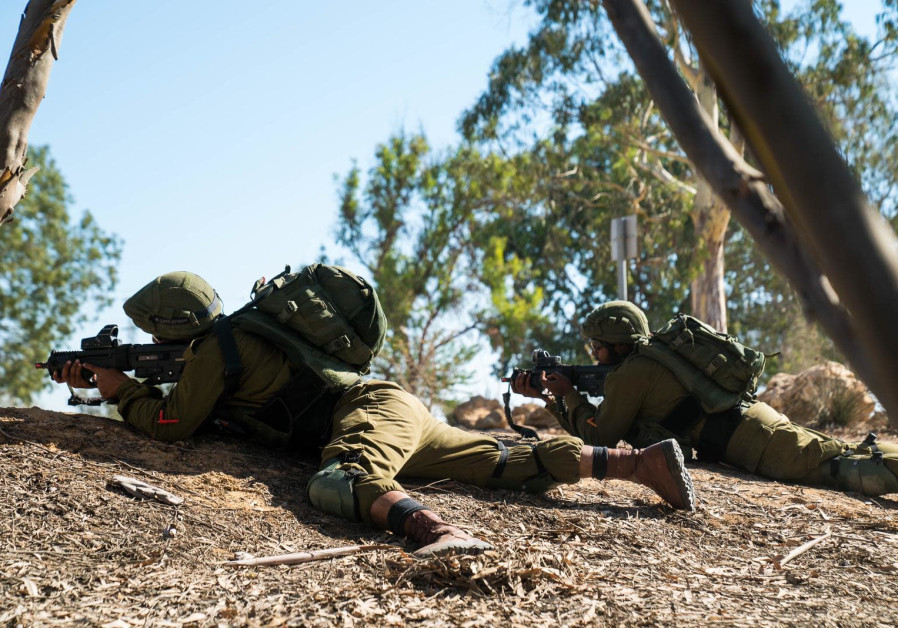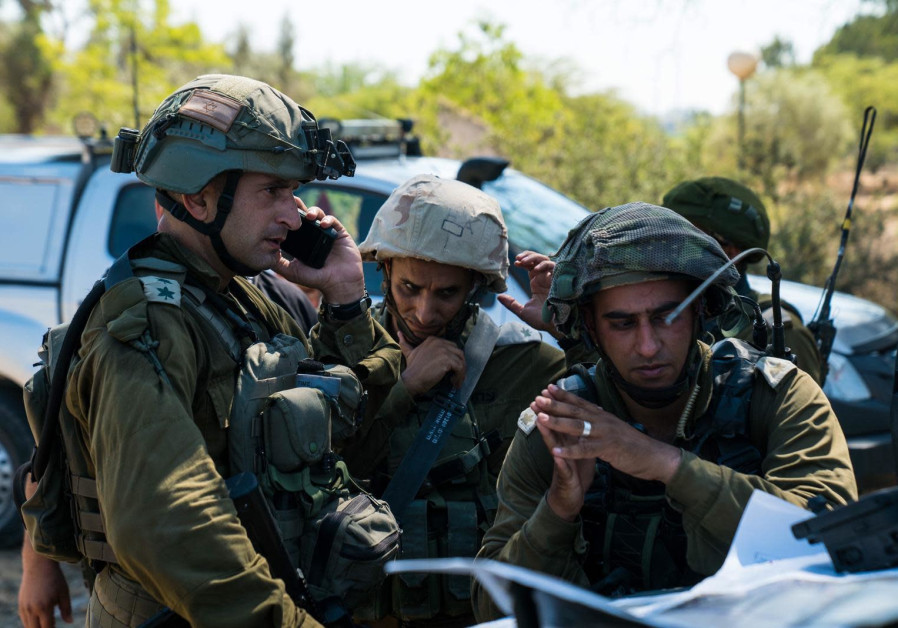IDF: Next Gaza war will be short but deal 'massive blow' to Hamas
IDF solders of the Southern Command take part in a drill .
(photo credit: IDF)
Dear Reader,
As you can imagine, more people are reading The Jerusalem Post than ever before.
Nevertheless, traditional business models are no longer sustainable and high-quality publications,
like ours, are being forced to look for new ways to keep going. Unlike many other news organizations,
we have not put up a paywall. We want to keep our journalism open
and accessible and be able to keep providing you with news
and analysis from the frontlines of Israel, the Middle East and the Jewish World.
As one of our loyal readers, we ask you to be our partner.
For $5 a month you will receive access to the following:
- A user experience almost completely free of ads
- Access to our Premium Section
- Content from the award-winning Jerusalem Report and our monthly magazine to learn Hebrew – Ivrit
- A brand new ePaper featuring the daily newspaper as it appears in print in Israel
Help us grow and continue telling Israel’s story to the world.
Thank you,
Ronit Hasin-Hochman, CEO, Jerusalem Post Group
Yaakov Katz, Editor-in-Chief
The next war with terror groups in the Hamas-controlled Gaza Strip will be shorter than Protective Edge and will see the Israeli army deal a massive blow to Hamas and the Palestinian Islamic Jihad.
The IDF has faced increasing criticism following allegations by former military ombudsman Maj.-Gen. (res.) Yitzhak Brick who warned that the military, especially the ground forces, are not prepared for a large-scale war.
But the military says it has learnt the lessons from the over 50-day Operation Protective Edge in 2014 as well as the numerous rounds of violence over the past year, the IDF says it has the capabilities and intelligence to inflict severe damage to terror groups in a short amount of time should a war break out.
The military has also increased the number of PIJ and Hamas targets which will be struck in the next campaign.
As one of his first visits as chief of staff, Lt.-Gen. Aviv Kochavi went to the Southern Command and met with senior officers and approved operational plans for war, including setting up a centralized administrative unit to prepare a list of potential targets in Gaza in case a war should break out.
When Kochavi took office as the top military officer in January, southern Israel and the Gaza Strip became the top priority for the IDF, and has led to the military to increase its readiness in the area.
The readiness process involves the cooperation of all bodies in the IDF’s General Staff headed by the Southern Command and focuses on empowering intelligence, linking field units with real-time intelligence, increased training of troops, and an extensive logistical effort.
While there has not been a war since 2014, in the past year since the Great Return March protests began along the border fence, there have been ten rounds of violent conflict between the two sides. The first six months of 2019 alone saw close to 1,000 rockets- the last violent round in May saw the two terror groups fire 700 rockets and one rocket propelled grenade. Five Israeli civilians were killed in that round.
With the understanding that the transition from routine to war in the area can occur at a moment’s notice, the Gaza Division’s engineering forces have also continued its work to improve the protection to the homefront, including the upgraded barrier with the Strip which is expected to be completed-both above and underground-by next summer to remove the threat of cross-border attack tunnels.
Until then, the army is not too keen on another military operation inside the Hamas-controlled enclave.
Following the death of an Israeli civilian by a Kornet anti-tank missile fired at his car in May during the last round of violence, the military has also begun to construct large sand berms and planting trees to protect citizens from threats like anti-tank fire emanating from the Strip.
But anti-tank fire and tunnels is not the only threat that the military is concerned about, the increased use of drones and other small quadcopters by groups to either gather intelligence on troop movements or attack troops is also of major concern.
In the six months since Kochavi entered office and placed Gaza at the top of the priority list, the Southern Command has built a dedicated training program under which unit training has been carried out on the basis of a southern scenario. The plan includes battalion fire drills which are according to designated battalion combat criteria in the Gaza Strip.
On Wednesday the military completed the largest drill since the last conflict in the coastal enclave, Operation Protective Edge in 2014, which saw the participation of eight brigade commanders, hundreds of reservists and the participation of air and naval forces.
During the four-day long drill, key scenarios which the IDF expects to encounter in any future war were practiced including maritime attacks by terror groups in the Strip, evacuation of wounded soldiers, IDF incursions into northern Gaza as well as attacks on civilian communities and the evacuation of communities along the border.
The large-scale exercise “was “another significant step in improving the IDF’s operational preparedness in the Gaza Strip,” the army said in a statement, adding that the drill was “preplanned as part of the training schedule for 2019.”
Join Jerusalem Post Premium Plus now for just $5 and upgrade your experience with an ads-free website and exclusive content. Click here>>





